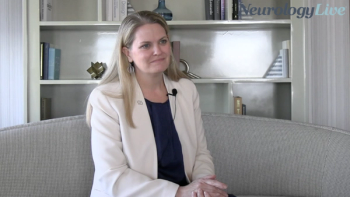
Recognizing and Addressing Comorbidities in Complex Headache Disorders: Svetlana Blitshteyn, MD, FAAN
The director of Dysautonomia Clinic talked about the importance of focusing beyond migraine to address often overlooked comorbidities such as dysautonomia, hypermobility spectrum disorders, and mast cell activation syndrome. [WATCH TIME: 10 minutes]
WATCH TIME: 10 minutes
"If you're treating their migraine headache and they're not getting better with a number of medications, try considering dysautonomia, hypermobility spectrum disorder, and mast cell activation syndrome."
Dysautonomia, characterized by autonomic nervous system dysfunction, includes a wide range of symptoms and disorders. Postural orthostatic tachycardia syndrome (POTS), neurocardiogenic syncope (NCS), and orthostatic hypotension (OH) are the most common dysautonomic disorders often associated with hypermobility spectrum disorders (HSD) and mast cell activation syndrome (MCAS).1 Migraine also often coexists with these complex disorders, particularly in patients with multiple systemic symptoms such as chronic dizziness, lightheadedness, orthostatic intolerance, joint pain, and allergic manifestations.
In a recently published review conducted by author Svetlana Blitshteyn, MD, FAAN, director and founder of Dysautonomia Clinic, in Buffalo, New York, several studies had a significant overlap and shared pathophysiology in migraine, dysautonomia, HSD, and MCAS.1 In the review, Blitshteyn noted that these complex disorders may present a diagnostic and therapeutic challenge in patients with migraine and require a clinician’s high index of suspicion in the clinical setting. Overall, she noted that diagnosis and treatment of these disorders in patients with migraine is important for comprehensive patient-centric care, to reduce symptom burden, and improve functional impairment secondary for both migraine and comorbidities.
Blitshteyn, who also serves as a clinical associate professor of neurology at the University at Buffalo Jacobs School of Medicine and Biomedical Sciences, recently sat down in an interview NeurologyLive® to discuss the frequency of autonomic disorders in large clinical practices. She also talked about common comorbidities associated with migraine, and the reason why is it essential to address them in treatment. Additionally, she spoke about how neurologists can collaborate with specialists in fields such as allergy, cardiology, and gastroenterology to provide more comprehensive care for patients with complex headache.
REFERENCE
1. Blitshteyn S. Dysautonomia, Hypermobility Spectrum Disorders and Mast Cell Activation Syndrome as Migraine Comorbidities. Curr Neurol Neurosci Rep. 2023;23(11):769-776. doi:10.1007/s11910-023-01307-w
Newsletter
Keep your finger on the pulse of neurology—subscribe to NeurologyLive for expert interviews, new data, and breakthrough treatment updates.

































